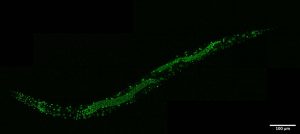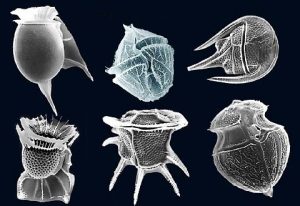Enter your address to receive notifications about new posts to your email.
Science & Publishing
-
Science & Publishing
Announcing new sections at GENETICS
GENETICS is pleased to announce the addition of new sections as part of a topical reorganization to best convey its scientific interests.
-
Science & Publishing
A look ahead with GENETICS Editor in Chief Howard Lipshitz
Stepping up to the helm of a journal like GENETICS is no easy task, but Howard Lipshitz is ready for the challenge. * GENETICS and GSA have been a part of Lipshitz’s career from the very start. “I joined the Society in 1979 as a student member so that I could get a monthly copy…
-
Science & Publishing
Nerve cell organelle mystery
NUN bodies in C. elegans offer clues about nervous system differentiation. One of the most active areas of research today explores the differences between individual cell types and how cells become differentiated. This specialization of cell types relies on changes in gene expression, but how those changes are orchestrated remains unknown. Now, research published in…
-
Science & Publishing
New Senior Editors joining GENETICS and G3
GENETICS and G3: Genes|Genomes|Genetics are pleased to announce two new Senior Editors: Meera Sundaram and Brian Oliver. GENETICS Meera Sundaram Meera Sundaram is a Professor of Genetics at the University of Pennsylvania Perelman School of Medicine. She received her BA in Biology from Mount Holyoke College and her PhD in Molecular Biology from Princeton University, and…
-
Science & Publishing
Bizarre Bases: what studying organisms with weird genomes tells us about the rules of life
For every rule, there are exceptions. The same is true for how organisms organize their genomes. From how DNA is packaged in the nucleus to what genetic code is used for translating proteins, notable exceptions are found all across the tree of life. Most organisms use the standard genetic code. A few, such as ciliates,…
-
Science & Publishing
New editors are joining GENETICS
GENETICS is pleased to announce three new editors: Kavita Jain, Amanda Larracuente , and Tina Tootle. GENETICS Kavita Jain Kavita Jain is a theoretical physicist by training and has been working on problems in theoretical population genetics for more than a decade. She is interested in understanding the adaptive dynamics of microbial populations, evolutionary dynamics…
-
Science & Publishing
Announcing three new GENETICS editors
GENETICS is pleased to announce three new editors: Jonathan Flint, Michael Gore, and Aurélien Tellier. GENETICS Jonathan Flint David Geffen School of Medicine, UCLA Jonathan Flint is a British behavior geneticist and professor in residence in the Department of Psychiatry and Biobehavioral Sciences at the David Geffen School of Medicine at UCLA. In 2015, he…
-
Science & Publishing
Three new editors join GENETICS
GENETICS is pleased to announce three new editors: Barbara Conradt, Eva Hoffmann, and Jianming Yu. GENETICS Barbara Conradt University College London, UK Conradt studied in Germany and the US. For her PhD she joined Bill Wickner’s lab at UCLA where she worked on biochemical analyses of vacuole inheritance in S. cerevisiae. As a postdoc, she joined…
-
Science & Publishing
Genetics Society of America announces Howard Lipshitz as new Editor in Chief of GENETICS
GENETICS, the flagship journal of the Genetics Society of America, is pleased to announce that Howard Lipshitz of the University of Toronto will become its Editor in Chief in January 2021. Mark Johnston of the University of Colorado School of Medicine has served as Editor in Chief of GENETICS since 2009. Johnston ushered in a…
-
Science & Publishing
Peer Review Week 2020: Trust in Peer Review
As we wrap up Peer Review Week 2020, here’s a look at how the GSA journals help build trust in peer review. Our data availability policy means that reviewers and editors can really dig into the data during the review process—and that readers can access the data and build on it moving forward! Expert…
-
Science & Publishing
GENETICS and G3 welcome new editors
GENETICS and G3 are pleased to announce three new editors: Yasuhiko Kawakami, Amy Ralston, and Jordan Ward. GENETICS Yasuhiko Kawakami University of Minnesota I am interested in understanding the mechanisms that regulate specification, proliferation and patterning, leading to morphogenesis of functional tissues and organs. I use mice and zebrafish to study mechanisms of development of the…







